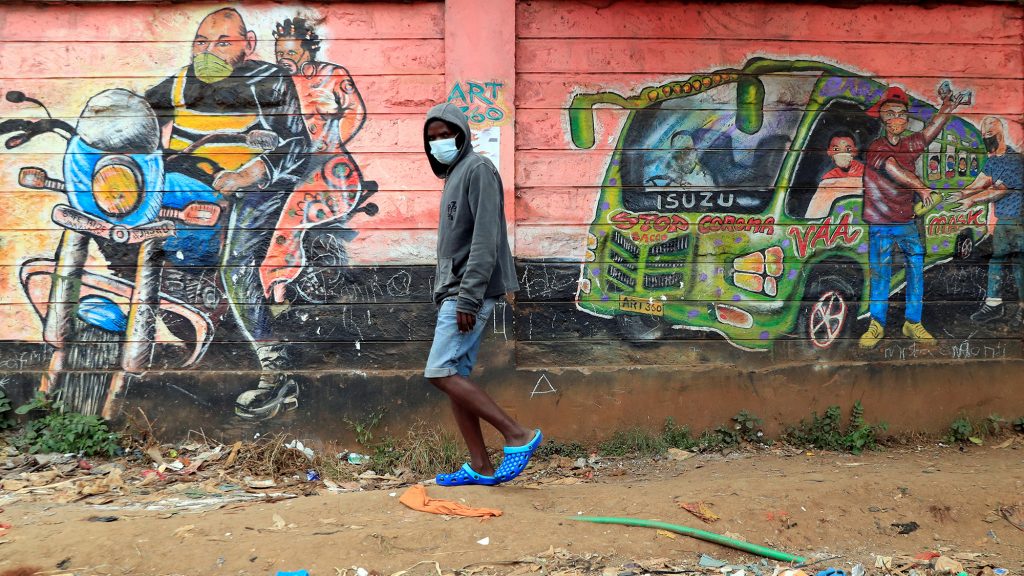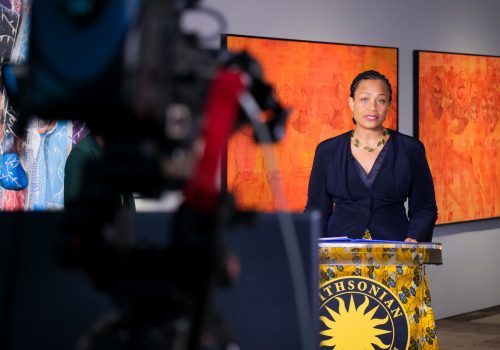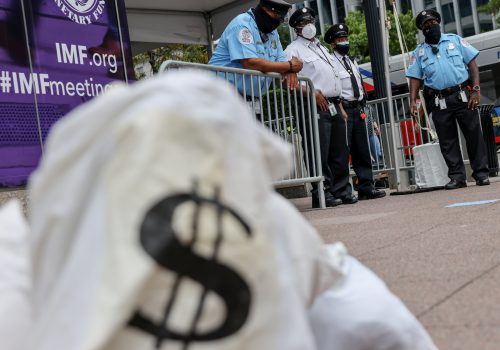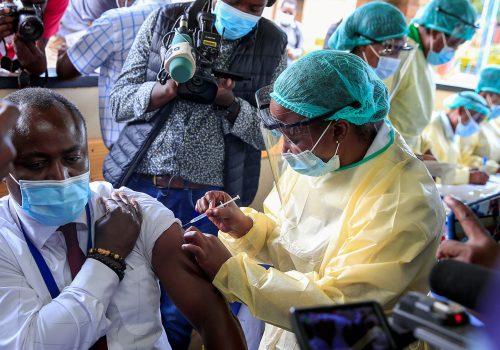For leaders of the Group of Twenty (G20) nations, this weekend’s summit in Rome presents an opportunity for post-pandemic celebration: Their response to the COVID-19 crisis showcased policymakers’ capacity to transcend politically expedient “beggar thy neighbor” reflexes and instead pursue a cooperative, multilateral approach.
But the festive mood shouldn’t overshadow the need to address the entrenched inequality of the quota-based allocation of special drawing rights (SDRs)—an International Monetary Fund (IMF) composite currency unit that member countries can convert into a freely usable currency to finance imports and other needs.
The G20, which accounts for around 80 percent of global GDP, must enhance the impact of SDRs where they are most needed, such as in low-income countries (LICs). That would set the world on a path toward synchronized recovery in the short-term and global income convergence in the medium- and long-term.
“A historic decision”
In both size and scope, the $650 billion SDR allocation is the international community’s most ambitious response to the pandemic, increasing fiscal space and fortifying global financial stability. It has benefited all member countries and represents the largest such allocation in the IMF’s history—around triple the amount it injected into the international financial system during the 2008 financial crisis.
Across the developing world, the newly issued SDRs will reduce countries’ exposure to exchange-rate volatility and mitigate liquidity constraints associated with elevated balance of payment pressures. This will be especially impactful in Africa, where the allocation could help countries confront myriad challenges, including weathering currency gyrations, replenishing dwindling foreign-exchange reserves (which declined by 27 percent in 2020), and financing essential imports, such as COVID-19 vaccines.
In addition to preventing liquidity crises from morphing into insolvency crises, the SDRs will help sustain investor confidence and enhance the prospects for an inclusive global recovery.
By indiscriminately injecting liquidity into the global economy, the unconditional and countercyclical SDR allocation was always the most cost-effective and low-risk response to the pandemic-induced economic downturn. As IMF Managing Director Kristalina Georgieva said in August: “This is a historic decision—the largest SDR allocation in the history of the IMF and a shot in the arm for the global economy at a time of unprecedented crisis.”
A distribution dilemma
But there is a problem: The global distribution of this financial shot in the arm is just as skewed as the supply of inoculations against COVID-19.
High-income countries that have drawn on effective advance purchase agreements and hoarded vaccines have also received nearly 60 percent of SDRs (or 65 percent when including China). This is despite the fact that they do not genuinely need SDRs, since most enjoy the exorbitant privilege of issuing a reserve currency. Conversely, LICs that do not enjoy the same privileges have been wildly disadvantaged: Only 0.5 percent of vaccines worldwide have been administered in LICs, compared to 77 percent in high- and upper-middle-income countries.
In practice, the effect of the allocation is expected to be more significant in LICs, where limited fiscal space and prohibitively high borrowing costs have limited the size and scope of government stimulus measures. Individually, these countries received a very low volume of SDRs and collectively a lower share (around 3 percent) of the total allocation, setting the stage for a two-speed recovery. Africa, which is home to most LICs, received just 5 percent of the total allocation (around $33 billion). That’s less than Japan and South Korea, which together received more than $37 billion (6 percent), or the European Union, which received $139 billion (21 percent).
The low allocation of SDRs to LICs is commensurate with their share of global GDP, which ultimately determines their IMF quotas. Currently, these nations account for less than 1 percent of global GDP; this partly reflects invariance in the drivers of growth and trade, which remains heavily dependent on commodities. The latest United Nations Conference on Trade and Development’s Commodities and Development Report classifies nearly 80 percent of the seventy low-income countries as commodity-dependent. This production structure exposes these nations to global volatility and adverse commodity terms of trade shocks.
A few high-income countries have pledged to recycle their unused SDRs to increase the volume of concessional lending to the most vulnerable LICs. More countries should support such efforts. A reallocation of around four hundred billion dollars in SDRs to countries that need them most would make a huge difference in terms of economic recovery and structural transformation. By injecting large amounts of investments to set these countries on a robust and long-run growth trajectory, it could also engineer a Big Push green growth development model which would narrow interregional income inequality and accelerate global income convergence.
Big push, big help
Operationally, a shift towards a Big Push model, supported by the effective redeployment of unused SDRs, would help LICs overcome several development challenges, including the unhealthy low-savings and poverty traps. At sufficient scale, this would provide long-term capital to finance the necessary massive investment in critical infrastructure to boost productivity and crowd-in private investment, which will help alleviate supply-side constraints and diversify sources of growth and trade.
The needs of these poorest countries are acute and their financing gaps have been exacerbated by the pandemic, which caused governments to dramatically raise social spending as fiscal revenues shrank. According to IMF estimates, LICs will need around two hundred billion dollars annually until 2025 to bolster their pandemic response—and an additional $250 billon to keep pace with advanced economies that are on a stronger recovery path. Under the best-case scenario of the effective mobilization of resources, LICs would be able to return to their pre-crisis convergence path with advanced economies no earlier than 2023.
In addition to rebuilding external buffers for greater resilience in the face of the looming tightening global financial conditions triggered by heightening inflationary pressures and expectations, the reallocation of unused SDRs could also provide the minimum level of resources for infrastructure investment required for self-sustaining growth. Over time, the growth of public investment and the expansion of industrial production will accelerate the development of regional value chains and create complementary demand—which will ignite a virtuous cycle of sustained and robust per-capita income growth.
The opportunity of injecting large-scale resources in LICs under the proposed Big Push model could transform the collective goodwill borne out of the pandemic into a more inclusive, global economic integration model that blurs the historical divide between developed and developing nations, and between high-income and low-income countries. It has the potential to alleviate climate-related challenges and reduce global income inequality, especially interregional inequality shaped by structural factors, such as sticky colonial development models of resource extraction that sustain commodity dependence.
The Big Push green growth development model engineered by the effective reallocation of unused SDRs could also rebrand the IMF not just as the world’s lender of last resort—but one that engages effectively with regional development banks to meet sustainable development goals.
Hippolyte Fofack is chief economist and director of research at the African Export-Import Bank (Afreximbank).
Further reading
Mon, Oct 18, 2021
Africa’s cultural revolution is here. Meet some of its movers and shakers.
New Atlanticist By Katherine Walla
The Atlantic Council brought together Africa’s brightest cultural minds—and the policymakers who’ve helped make their achievements possible—to understand Africa's cultural revolution and rising soft power.
Wed, Oct 20, 2021
Let them eat communiqués: Rich countries’ pandemic inaction
New Atlanticist By
Struggling countries came away with more questions than answers from last week's IMF and World Bank meetings.
Wed, Jul 7, 2021
How rich countries can help Africa respond to the third wave of COVID-19
New Atlanticist By
When the G20 finance ministers and central bank governors meet July 9 and 10 in Venice, Italy, they have an opportunity to respond to Africa's third-wave crisis in a meaningful way. Will they take it?
Image: A man wears a face mask as he walks past a wall mural advocating against the coronavirus disease outbreak within the Kibera settlement in Nairobi, Kenya on July 18, 2021. Photo via REUTERS/Thomas Mukoya.



